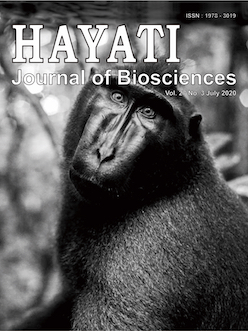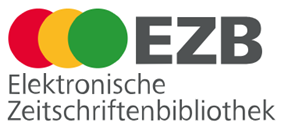Genetic Relationship between Tongka Langit Bananas (Musa troglodytarum L.) from Galunggung and Maluku, Indonesia, Based on ITS2
Abstract
Tongka Langit or Fe’i banana (Musa troglodytarum L.) has the T genome and a very high content of beta-carotene. It only grew and spread around the regions of Maluku islands and Papua. However, recently our team found this banana on the foot of mount Galunggung, West Java, so this raised the question about its origin. The objective of this study was to understand the genetic relationship between Tongka Langit from Galunggung and Maluku islands and compared it with other bananas with different genomes. Genetic diversity analysis was done using ITS2 DNA marker and dendrogram analysis showed three groups. From the comparison of the ITS2 sequences, there were no difference (100% identity) between the ITS2 sequence of Tongka Langit originating from Galunggung and Maluku. In conclusion, based on the ITS2 marker, the Tongka Langit were more distantly related to cultivars with A and B genomes, and there was no difference in the ITS2 sequence of Tongka Langit originating from Galunggung and Maluku. To the best of our knowledge, there is no previous report of genetic relationship between Tongka Langit from Galunggung and other regions.
Downloads
HAYATI J Biosci is an open access journal and the article's license is CC-BY-NC. This license lets others distribute, remix, tweak, and build upon author's work, as long as they credit the original creation. Authors retain copyright and grant the journal/publisher non exclusive publishing rights with the work simultaneously licensed under a https://creativecommons.org/


















.png) IPB University
IPB University Department of Biology
Department of Biology The Indonesian Biological Society
The Indonesian Biological Society 

